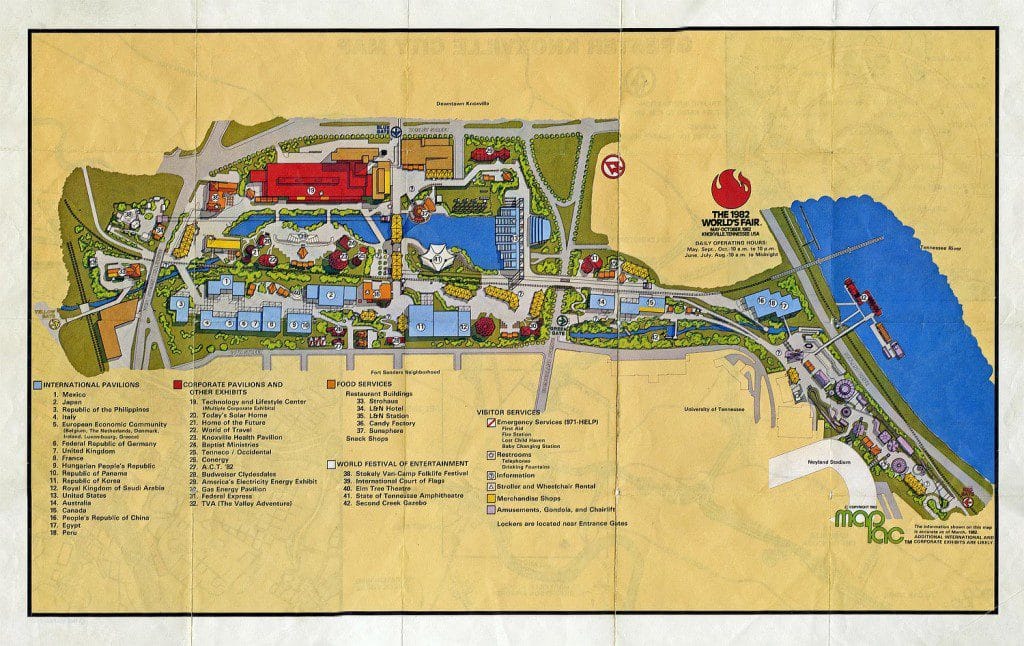World’s Fair Map and Brochure (1982)
Location: Knoxville, Tennessee
Years Active: May 1982 – October 1982
The 1982 World’s Fair, officially known as the Knoxville International Energy Exposition (KIEE) and simply as Energy Expo ’82 and Expo ’82, was an international exposition held in Knoxville, Tennessee, United States.
Focused on energy and electricity generation, with the theme Energy Turns the World, it was officially registered as a “World’s Fair” by the Bureau International des Expositions (BIE).
The KIEE opened on May 1, 1982, and closed on October 31, 1982, after receiving over 11 million visitors. Participating nations included:
- Australia
- Belgium
- Canada
- The People’s Republic of China
- Denmark
- Egypt
- France
- Greece
- Hungary
- Italy
- Japan
- Luxembourg
- Mexico
- The Netherlands
- Panama
- Peru
- Philippines
- Saudi Arabia
- South Korea
- United Kingdom
- United States
- West Germany
It was the second World’s Fair to be held in the state of Tennessee, with the first being the Tennessee Centennial Exposition of 1897, held in the state’s capital, Nashville.
The fair was constructed on a 70-acre site between Downtown Knoxville and the University of Tennessee campus. The core of the site primarily consisted of a deteriorating Louisville and Nashville Railroad yard and depot. The railroad yard was demolished, with the exception of a single rail line, and the depot was renovated for use as a restaurant during the fair.
The Sunsphere, a 266-foot steel tower topped with a five-story gold globe, was built as the main structure and symbol for the exposition. Today, the Sunsphere stands as a symbol for the city of Knoxville.
What is a world’s fair and its purpose?
A world’s fair, also known as a World Expo or Universal Exposition, is a large-scale international exhibition that showcases achievements in science, technology, culture, and industry from countries around the world. The primary purpose of a world’s fair is to promote international cooperation, cultural exchange, and technological innovation. These events offer nations an opportunity to showcase their advancements, foster diplomatic relations, and educate the public about various aspects of global progress.
Why did they stop having the World’s fair?
World’s fairs have not entirely ceased, but their frequency and popularity have diminished over the years. Several factors have contributed to this decline. One significant reason is the high cost of hosting and participating in these events. Additionally, the rise of alternative platforms for international cooperation and promotion, such as the internet and specialized trade fairs, has reduced the necessity of world’s fairs. Concerns about the environmental impact of such large-scale exhibitions and a changing global focus on sustainability have also played a role in the reduced frequency of world’s fairs.

